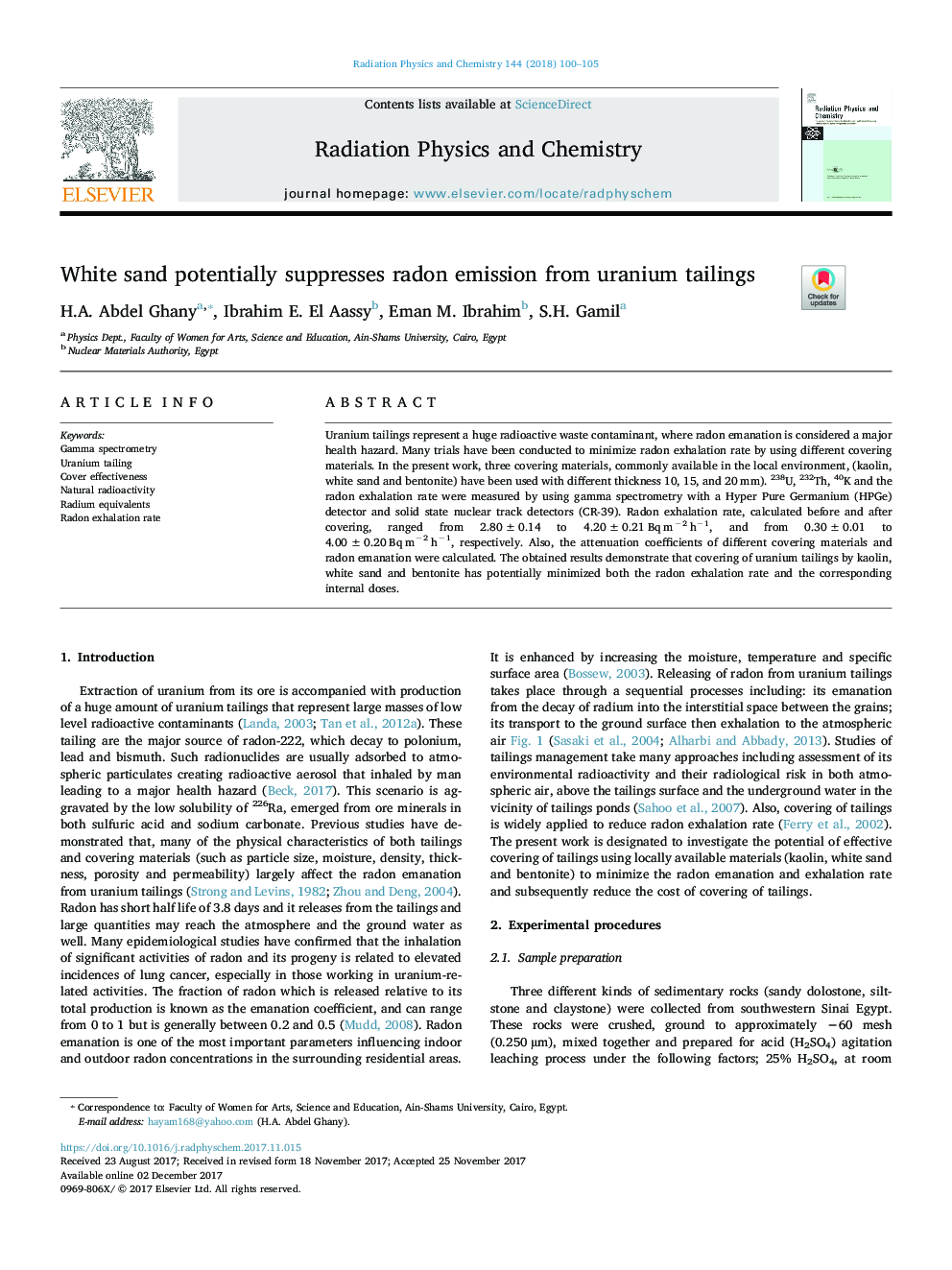| Article ID | Journal | Published Year | Pages | File Type |
|---|---|---|---|---|
| 8251556 | Radiation Physics and Chemistry | 2018 | 6 Pages |
Abstract
Uranium tailings represent a huge radioactive waste contaminant, where radon emanation is considered a major health hazard. Many trials have been conducted to minimize radon exhalation rate by using different covering materials. In the present work, three covering materials, commonly available in the local environment, (kaolin, white sand and bentonite) have been used with different thickness 10, 15, and 20 mm). 238U, 232Th, 40K and the radon exhalation rate were measured by using gamma spectrometry with a Hyper Pure Germanium (HPGe) detector and solid state nuclear track detectors (CR-39). Radon exhalation rate, calculated before and after covering, ranged from 2.80 ± 0.14 to 4.20 ± 0.21 Bq mâ2 hâ1, and from 0.30 ± 0.01 to 4.00 ± 0.20 Bq mâ2 hâ1, respectively. Also, the attenuation coefficients of different covering materials and radon emanation were calculated. The obtained results demonstrate that covering of uranium tailings by kaolin, white sand and bentonite has potentially minimized both the radon exhalation rate and the corresponding internal doses.
Related Topics
Physical Sciences and Engineering
Physics and Astronomy
Radiation
Authors
H.A. Abdel Ghany, Ibrahim E. El Aassy, Eman M. Ibrahim, S.H. Gamil,
